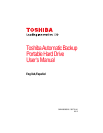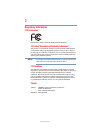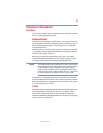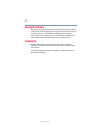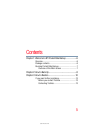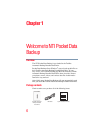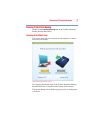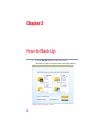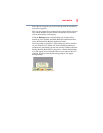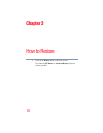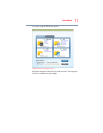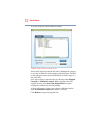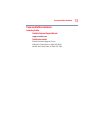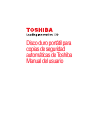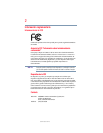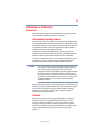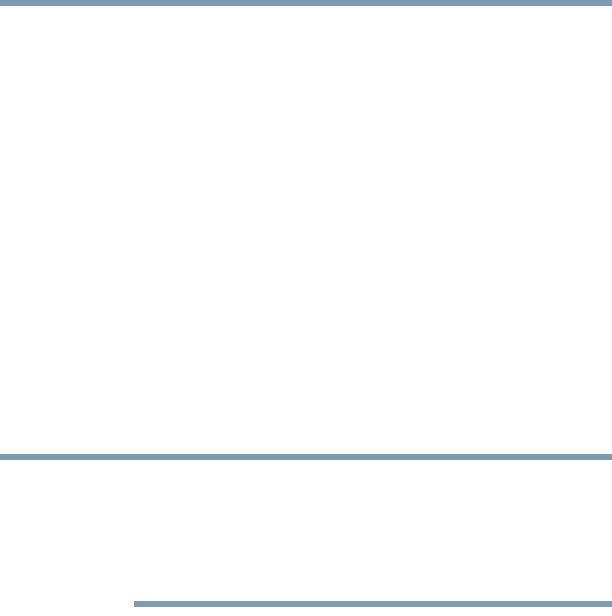
3
5.375 x 8.375 ver 2.3
Definitions and Introduction
Definitions
To ensure this user guide is easily understandable, the following terms, as defined
below, are used throughout this user guide.
Backup and Restore
Data can be lost due to damages to your hard drive or corruption by viruses. It can
also be accidentally deleted or stolen. Backing up refers to making extra copies of
data for safekeeping. Restoring refers to recovering the lost or corrupted files
using the backed up data.
Making a backup of your content simply copies the content from your computer
to your Toshiba Automatic Backup Portable Hard Drive and does not delete any
content from the computer’s hard drive.
Restoring your content from a backup simply copies it from your Toshiba
Automatic Backup Portable Hard Drive to your computer, and does not delete
any content from the Toshiba Automatic Backup Portable Hard Drive.
The Toshiba Automatic Backup Portable Hard Drive does not erase anything
on your computer's hard drive during backup. It simply copies the content to
the Toshiba Automatic Backup Portable Hard Drive from the computer.
Similarly, nothing is deleted from the Toshiba Automatic Backup Portable
Hard Drive during a restore. Contents are simply copied (i.e. restored) from
the Toshiba Automatic Backup Portable Hard Drive to your computer.
During future (i.e. subsequent) backups, all new content and other content that
has been modified since the last backup will be copied to the Toshiba Automatic
Backup Portable Hard Drive. During this process any older files will be replaced
(i.e. overwritten) with newer revisions.
Content
The Toshiba Automatic Backup Portable Hard Drive has been developed to back
up only the data that you have created or copied to your computer – photos,
movies, music and files. In this guide, we refer to this data as content. The
Toshiba Automatic Backup Portable Hard Drive does not back up your operating
system or software (e.g. Windows
®
).
NOTE



